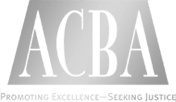The battle against sexual discrimination has arisen as a key issue in the changing dynamics of modern workplaces, making it harder to cultivate an inclusive and respectful culture. Asserting one’s right to one’s gender identity and sexual orientation, dealing with unwanted sexual approaches, and understanding the complexities of fighting sexual harassment via efficient legal techniques are all goals of this comprehensive book. It stresses the need of taking legal action to address these concerns, with the goal of creating a society where gender equality is valued and discrimination is strongly condemned. We are committed to assisting you in your pursuit of a safe and equitable workplace by offering information on legal options and preventive steps.
In-Depth Knowledge on Discrimination in the Workplace
The establishment of fair and inclusive work environments is obstructed in many ways by prejudice in the workplace. Hostility in the workplace may take many forms, including but not limited to sexual and physical harassment, as well as other behaviors that target someone based on their gender, sexual orientation, or gender identity. Every person has the right to an inclusive workplace free from bigotry and discrimination, and California’s strict legal system vigorously defends this right. Exploring both overt and covert types of prejudice, this book tries to explain their varied character and emphasize the substantial influence they may have on mental health, professional advancement, and workplace dynamics. An inclusive and respectful culture is essential for the professional landscape of California and beyond; the first step in achieving this is acknowledging and comprehending the scope of discriminatory behaviors.

Discrimination in the Workplace: Multifaceted
The values of equality and respect may be undermined by discrimination in the workplace, which can take many subtle forms. Among them are:
The persistent prevalence of gender stereotypes presents a substantial obstacle in the battle against workplace gender discrimination. These biases may cause personnel choices to be biased in favor of or against someone because of their gender, sexual orientation, or gender identity. This prejudice not only prevents certain people from moving up the corporate ladder, but it also serves to perpetuate damaging perceptions and a vicious cycle of inequity.
Pay Disparities: When people’s salaries are determined by their gender, sexual orientation, or gender identity, even when they do the same job, it’s clear that there is gender discrimination. Laws such as the California Equal Pay Act (CEPA) need to be strictly enforced in order to close the pay difference since this inequality undermines the worth of equal labor and goes against the ideals of justice.
Sexual Harassment: When unwanted sexual approaches and other types of harassment are common, it makes people feel unsafe, humiliated, and sick to their stomachs. The victims’ work and personal life are profoundly impacted by these actions, which may vary from overt sexual solicitations to more subtle types of verbal or physical harassment.
Threats to Journalists’ Lives: Retaliation against those brave enough to denounce sexual or gender discrimination in the workplace is a particularly disheartening facet of workplace discrimination. Those who seek justice are further victimized, and systems for reporting and resolving injustice are undermined, by this retribution, which may manifest in many ways, including social exclusion and professional setbacks.
Bias and Differential Treatment: Disparities in hiring practices, salaries, workloads, and training opportunities are just a few of the many important areas of employment where discrimination persists. The career paths and general work happiness of employees are profoundly impacted by this kind of discrimination, which stems from prejudices against gender, sexual orientation, or gender identity.
Improvements to California’s Legal Protections
California has enacted a thorough legislative framework to safeguard workers from unfair treatment in the workplace in order to address the widespread problem of workplace discrimination. Title VII of the Civil Rights Act provides federal protections against sex-based discrimination, the Fair Employment and Housing Act (FEHA) of California prohibits discrimination based on protected characteristics, and progressive LGBTQ+ rights laws in California, such as the Gender Nondiscrimination Act (AB 887) and the Transgender Rights in the Workplace Act (AB 1266), are all part of this package. By outlining the state’s commitment to fostering an inclusive and safe workplace for all employees and providing pathways for legal action, these laws provide the groundwork for people to take a stance against discrimination.

Measures You Can Take To Combat Discrimination On The Job
Take action armed with knowledge to empower yourself against prejudice. Critical first actions include getting the advice of experienced employment attorneys, keeping thorough records of discriminatory occurrences, and reporting such conduct in accordance with set organizational standards. By submitting official complaints to organizations such as the Equal Employment Opportunity Commission (EEOC) or the California Department of Fair Employment and Housing (DFEH), victims of rights violations may be able to pursue justice. It is essential to know one’s rights and remedies in the event of employment discrimination, to cooperate with any investigations that may follow, and to know the extent of one’s legal safeguards.
Raise Awareness and Foster Inclusivity
Building a company culture that rejects gender stereotypes, sexual nature harassment, and other forms of inequality requires more than just reacting quickly to incidences of prejudice. Not only must we follow the letter of the law, but we must also support larger educational campaigns that bring attention to and teach tolerance and acceptance of gender expression and sexual orientation as integral parts of human identity. In this regard, human resources departments are crucial since they act as both enforcers of workplace regulations and resources for workers going through discrimination difficulties. Companies can do a lot to end discrimination on the job by sticking to the Civil Rights Act’s tenets, fighting for equal treatment in the workplace, and providing workers with information about their rights and how to exercise them.
Establishing policies that directly tackle problems like sexual harassment, physical harassment, and unfair treatment, as well as providing training sessions on diversity and inclusion, can greatly aid in establishing a work environment that appreciates and respects the contributions of every employee. By taking these measures, we can make our workplaces safer and more inclusive for all employees, and we can also address the hate crimes that already exist.

Stakeholder Engagement in Legal Matters and Advocacy
It is critical for those who are confronted with prejudice to know when and how to pursue legal action. To do this, you may need to speak with professionals in the field of employment law, who can assess your unique circumstances and advise you on next steps, such as possible options for legal action and bargaining. When it comes to defending clients in legal procedures or submitting complaints with appropriate state or federal bodies, the assistance of attorneys who specialize in discrimination and harassment issues might be indispensable. With their knowledge and support, victims of prejudice know they are not alone and may access the tools they need to pursue justice.
In summary
The fight against sexual harassment and discrimination in the workplace is complex and need constant attention. Challenge and modify deeply rooted prejudices and habits needs a dedicated effort from people, organizations, and society at large. Every employee, regardless of their gender, sexual orientation, or gender identity, deserves the chance to work in a safe, equitable, and supportive environment. We can achieve this by utilizing existing legal frameworks, pushing for stronger protections, and cultivating an inclusive culture. Anyone, from individuals to whole organizations, may benefit from this all-inclusive handbook, which not only clarifies the nuances of workplace discrimination but also provides actionable actions and tactics for overcoming these obstacles. A world free of discrimination in the workplace, where every person may reach his or her full potential in an atmosphere of mutual respect and no bias, is within our reach if we all work together to raise awareness, educate, and take action.










